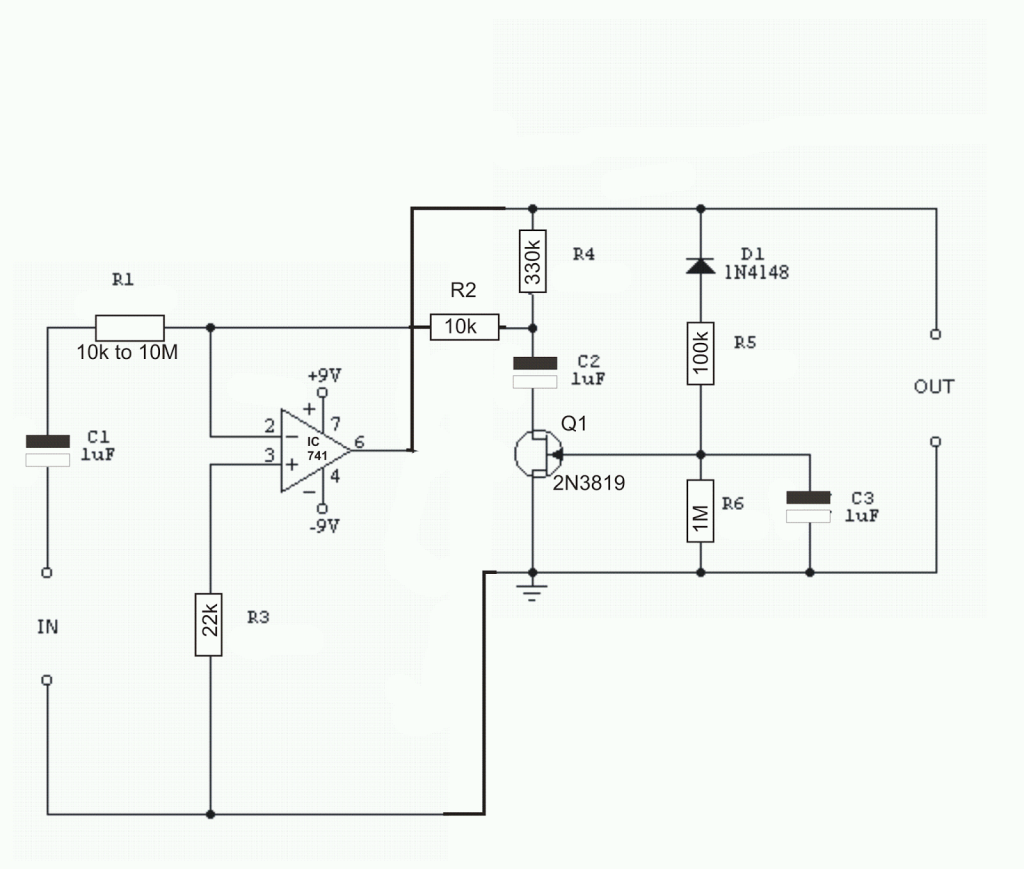In numerous occasions it is desirable to obtain an amplifier that gives an output signal of constant amplitude for numerous input signal levels and with the very least distortion.
A traditional way out of this challenge is to use a nonlinear amplifier.
An operational, as an illustration, run as a nonlinear amplifier if 2 antiparallel diodes are included in the feedback loop.
This program, nevertheless, while offering an output signal of close to constant amplitude, carries a setback: severe distortion.
How it Works
A more exquisite solution is to apply a constant volume FET amplifier circuit as shown in Fig below.
In such cases, the nonlinear ingredient is restored with the FET (Q1) and its associated elements.
When a small operational signal (741) is applied, its output is smaller.
As a result, the gate of the FET receives an incredibly minimal negative bias and the resistance between drain and source is substantial. As a result, the voltage gain is high.
The opposite happens in the event the input signal is bigger. Consequently, the common measure of the output signal self-regulates between 1.5V and 2.85V over a range of 50: 1 difference in the degree of the input signal without producing audible distortion.
The value of R1 is determined by the optimum expected amplitude of input signal and is established on a per 200k volt RMS. As an illustration, to satisfy up to 50Vrms signals R1 must 10M.
Circuit of a constant volume FET amplifier
